One of the reasons it takes me a lot of time to edit photos (besides the fact that I’m not too fond of the task) is that I get distracted. Here’s a perfect example:
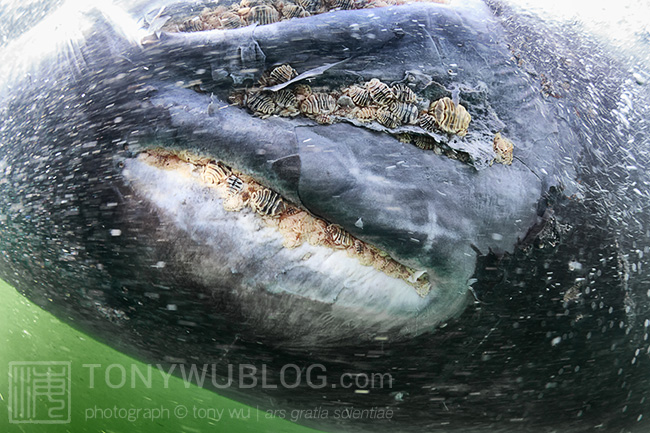
It’s a photo of whale lice. Here's a close-up in case you’re as fascinated as I am:
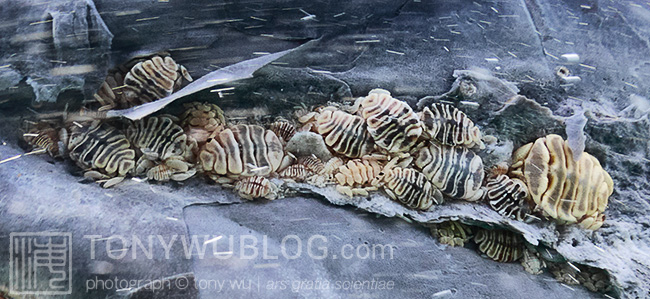
Ok so, to most (normal) people, something like this could be considered kinda gross, eliciting an “ick” or other similar monosyllabic reaction.
To me, it meant about three hours of trawling the net for information…searching, reading, ooohing and aaahing, all while examining this and other similar photos I have, marveling at the incredible variety and intricacy of life on Earth.
I learned a number of things in the process, like the fact that whale lice aren’t lice per se, though they are parasites, just like their namesakes. Whale lice are actually amphipods…tiny crustaceans…that make their living on their host cetaceans.
For sustenance, they pick off pieces of dead skin and flesh. In normal situations, population of these parasites seem to stay in check, thereby not hurting their large hosts (and homes).
I have, however, seen a humpback whale that was near death due to longline entanglement completely encrusted with whale lice, so in extreme circumstances, this “peaceful coexistence” can go haywire, much as populations of naturally occurring bacteria on and in our bodies can run amok when we experience health issues.
As I delved ever deeper into the world of whale lice, I discovered something even more interesting…namely, that cetacean cyamid species specialise in specific cetacean species (try saying that three times quicky!).
In other words, whale lice stick to certain whales.
Gray whales, for instance, play host to Cyamus scammoni (pictured above), Cyamus kessleri, and possibly another species of whale lice (I found references to a possible third species, but couldn’t find a species name).
In contrast, individuals of the Cyamus boopis species, a few of which I could just discern in this photo of a humpback raising the tip of its rostrum above the water in Alaska, make their home only on Megaptera novaeangliae.
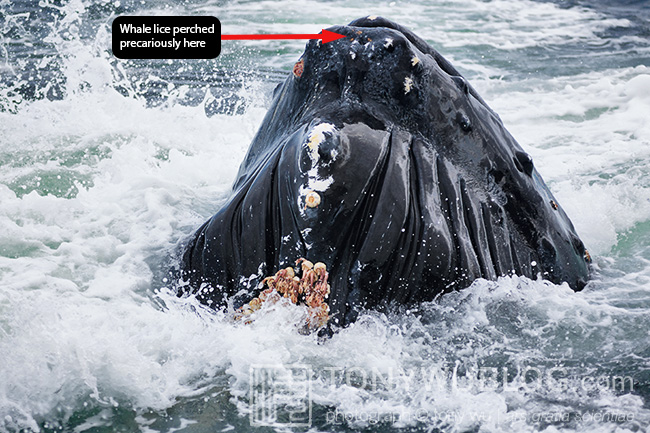
Once I started down this track of scouring whale photos for hitherto unnoticed life forms, I couldn’t stop.
Noticing the barnacles on the humpback above, I embarked on another journey across cyberspace, spending…oh let’s say…an additional three to four hours reading about these particular crustaceans.
Turns out, barnacles are cetacean-species-specific as well.
Cryptolepas rhachianecti attach themselves to gray whales, while Coronula diadema prefer humpbacks.
Huh. Who knew crustaceans could be so picky?
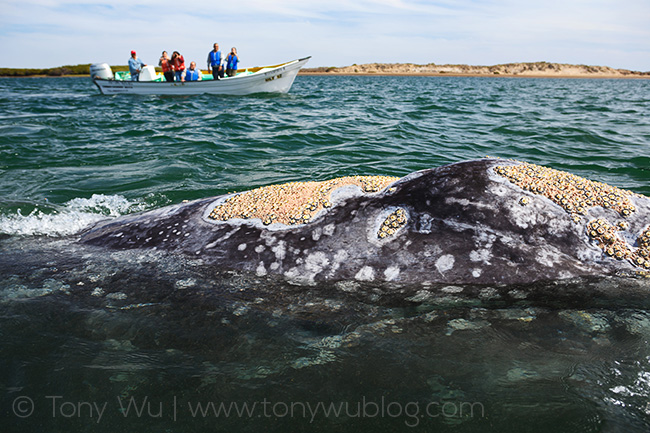
As an aside, it’s worth noting that unlike whale lice, barnacles don’t feed on the whales. They’re more like hitchhikers, using whales for transport while filtering the water for food. So barnacles are not parasites per se, but could perhaps more accurately be described as commensal organisms, for those of you who might care about the distinction.
Anyway…just when I thought that I’d reached the pinnacle of parasite trivia, I stumbled across what has gotta be the mother of all barnacle insanity.
Look at the photo of the humpback whale rising out of the water again. See the barnacles hanging on to the underside of the whale, where the ventral grooves are?
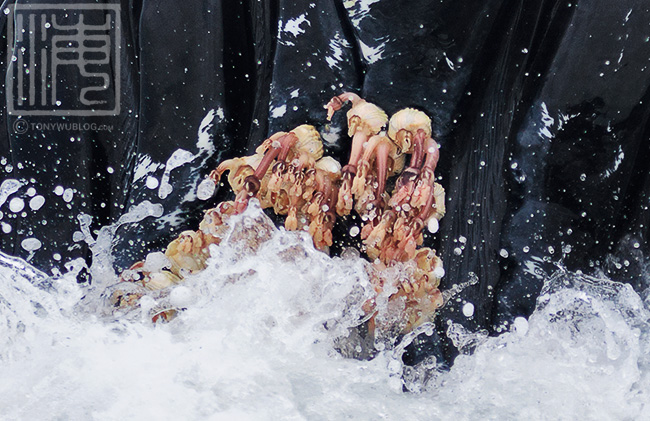
There’s nothing unusual about this, as humpback whale barnacles are often found in that area. What I want you to take notice of are the elongated gangly bits resembling floppy pink noodles hanging from the barnacles.
I’ve seen these many times before, and have always just assumed that the droopy appendages comprised poorly secured bits of the hard Coronula diadema barnacles that are so prevalent on humpbacks.
Turns out…get this…they are another species of barnacle altogether…Conchoderma auritum, a.k.a. a type of gooseneck barnacle, a species that makes its home exclusively on the Coronula diadema barnacles that make their home exclusively on humpback whales.
Whoa. Very meta.
All told, including time for meals, coffee breaks (+ resulting visits to the toilet), head-scratching, answering emails, writing this post, etc., I pretty much spent an entire day pondering parasites.
I’ll bet you’re envious.